Why NASA astronauts were stuck? Challenges faced in Returning back!
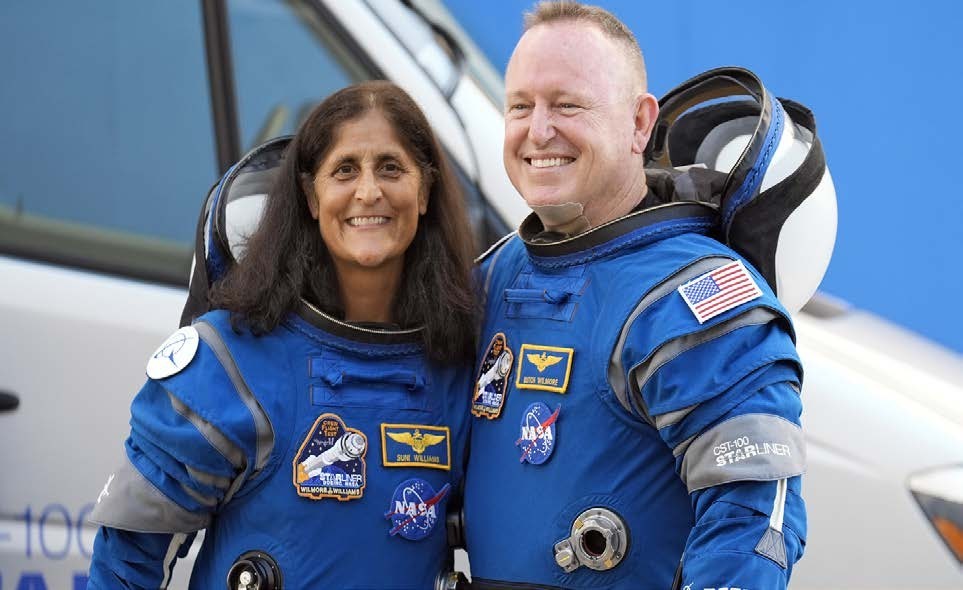
Sunita Williams, a trailblazer and an icon, has exemplified this spirit throughout her career. We are incredibly proud of all those who worked tirelessly to ensure their safe return. They have demonstrated what happens when precision meets passion and technology meets tenacity.Their unwavering determination in the face of the vast unknown will forever inspire millions.
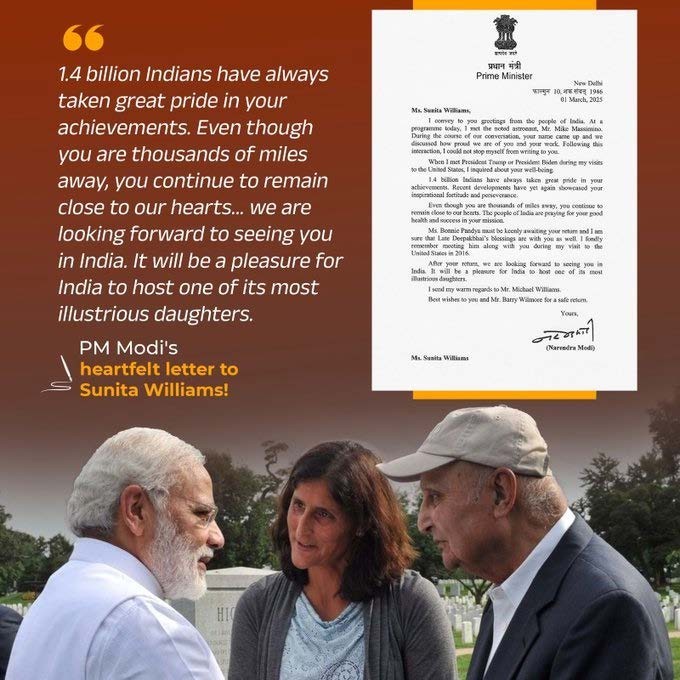
Context:
- NASA astronauts Sunita Williams and Butch Wilmore have returned to Earth on March 18, 2025 after their Crew 9 Dragon Spacecraft splashdown safely off the coast of Florida.
- According to NASA, the duo successfully undocked from the ISS, commencing their 17-hour voyage home aboard SpaceX’s Dragon spacecraft.

1.
What is the International Space Station (ISS)?

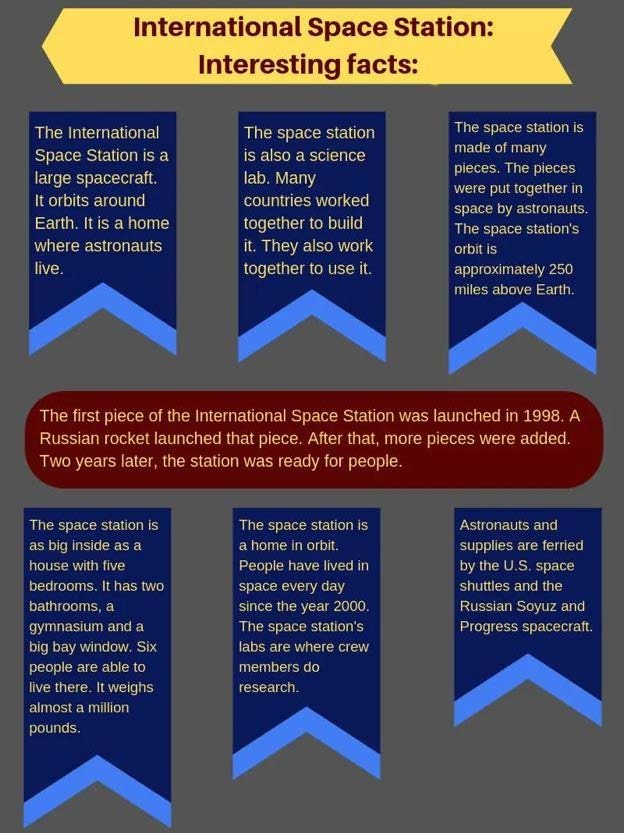
- It is a space station, or a habitable artificial satellite, in Low Earth Orbit (approximately 250 miles above Earth).
- It was the brainchild of former US President Ronald Reagan, who in 1984 proposed building a permanently inhabited spacecraft in cooperation with a few other countries.
- The ISS is one of the most ambitious international collaborations in human history.
- The ISS programme is a joint project between five participating space agencies: NASA (United States), Roscosmos (Russia), JAXA (Japan), ESA (Europe), and CSA (Canada).
- The ownership and use of the space station are established by intergovernmental treaties and agreements.
- The station is divided into two sections, the Russian Orbital Segment (ROS) and the United States Orbital Segment (USOS), which is shared by many nations.
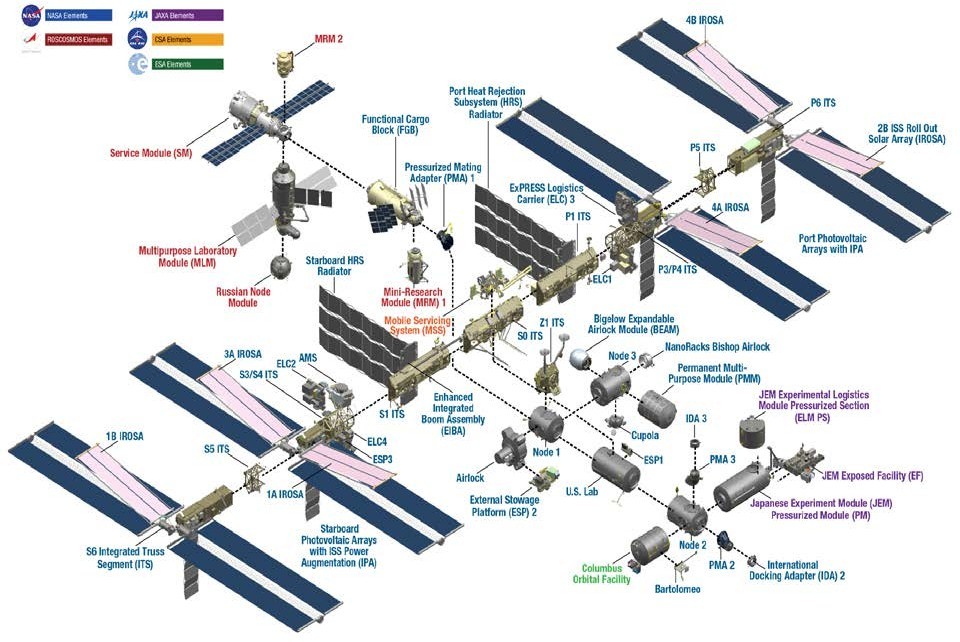
2.
What is the timeline of Boeing's Starliner mission that left NASA astronauts aboard ISS for 9 months?
- Barry "Butch" Wilmore and Sunita "Suni" Williams performed the first astronaut-crewed flight of Boeing's Starliner capsule to the International Space Station (ISS) in June 2024.
- However, what was supposed to be a mission lasting about one week turned into a nine-month stay aboard the ISS due to several issues with Starliner.
- Issues with the spacecraft prompted NASA and Boeing to send Starliner back to Earth uncrewed and keep Wilmore and Williams onboard the ISS until early 2025, when they would return home on a SpaceX Crew-9 Dragon spacecraft once Crew-10 arrived at the ISS.
- The SpaceX Crew-9 undocked in the early hours of Tuesday, March 18 and deorbited in the afternoon, before returning to Earth Tuesday evening.
- The crew splashed down off the coast of Tallahassee, Florida, where the astronauts got their long-awaited first breath of fresh air after over nine months.
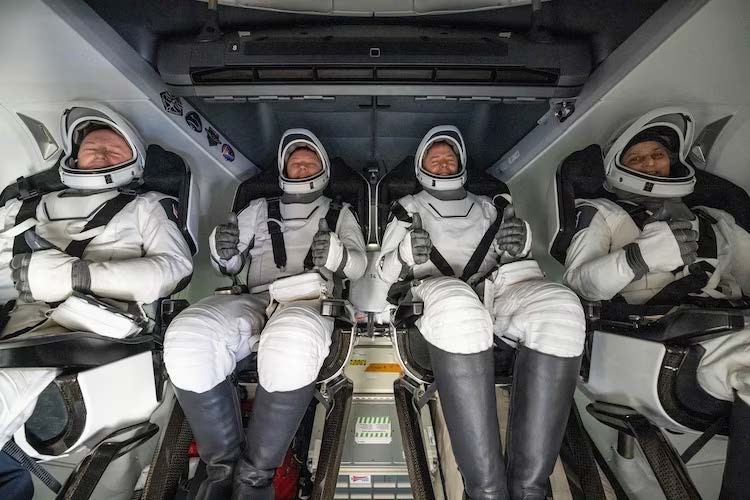
- Here's a timeline of the Starliner mission:
| Dates | About |
|---|---|
| April 2, 2024 |
|
| May 6, 2024 |
|
| May 7, 2024 |
|
| May 14, 2024 |
|
| May 23, 2024 |
|
| June 1, 2024 |
|
| June 2, 2024 |
|
| June 5, 2024 |
|
| June 6, 2024 |
|
| June 11, 2024 |
|
| June 14, 2024 |
 |
| June 18, 2024 |
|
| June 21, 2024 |
|
| June 28, 2024 |
|
| July 10, 2024 |
|
| Aug 7, 2024 |
|
| Aug. 24, 2024 |
|
| Aug. 29, 2024 |
|
| Sept. 7, 2024 |
|
| Sept. 13, 2024 |
|
| March 12, 2025 |
 |
| March 14, 2025 |
|
| March 16, 2025 |
|
| March 18, 2025 |
 |
3.
What is Boeing’s Starliner spacecraft?
- The Boeing Starliner (or CST-100) is a spacecraft designed to transport crew to and from the International Space Station (ISS) and other low-Earth-orbit destinations.
- Developed by Boeing under NASA's Commercial Crew Program (CCP), it consists of a reusable crew capsule and an expendable service module.
- The capsule has a diameter of 15 feet, which is slightly larger than the Apollo command module that went to the Moon and the SpaceX Crew Dragon, but smaller than the Artemis Orion capsule that's designed to go much further into space.
- It features a traditional cockpit with physical buttons and switches, offering a familiar interface for astronauts used to legacy spacecraft.
- Starliner can hold a crew of up to seven people and can remain docked to the ISS for up to seven months.
- Starliner is a spacecraft that transports astronauts in space, after being launched there by a rocket.
- The crew capsule houses the astronauts and will be able to survive reentry and return to the ground.
- The service module consists of the equipment and systems the astronauts need to survive in space, including air and temperature control, water supply, sanitation, etc.
- It also consists of engines and fuel required to maneuver the spacecraft.
- The service module won’t be reusable.

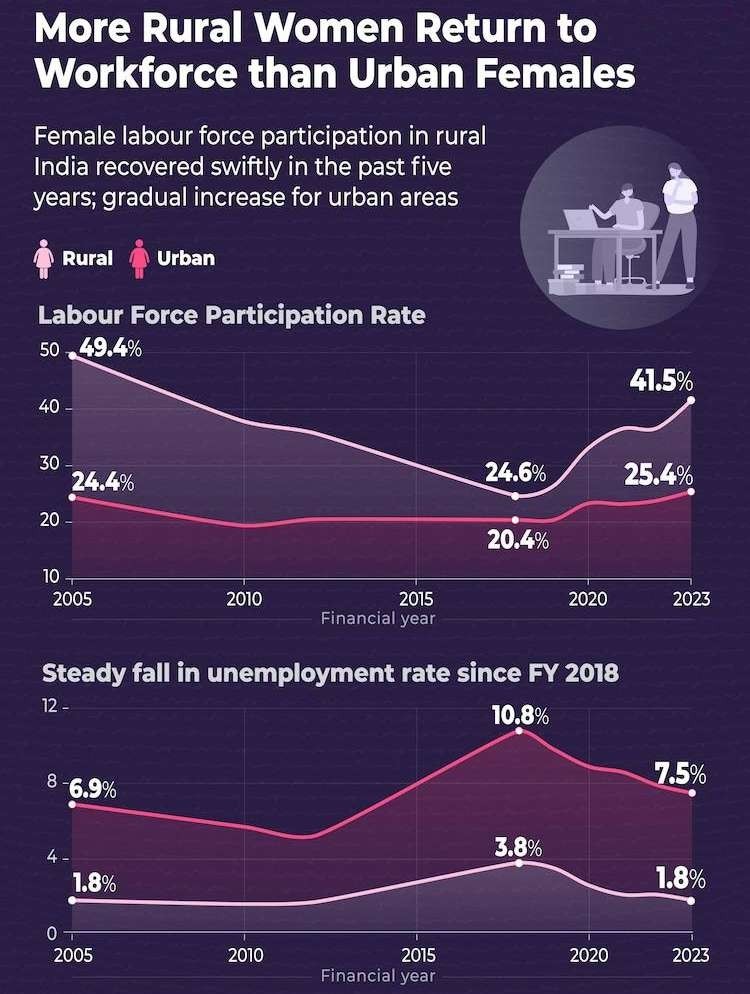
4.
What is Boeing’s test mission?
- The Starliner CST-100 is a new spacecraft developed specifically for the National Aeronautics and Space Administration’s (NASA’s) Commercial Crew Program, which seeks to enable private aerospace companies to transport astronauts to and from the ISS.
- With space travel expected to expand greatly in the coming years, this program is intended to free up NASA to focus on building spacecraft and rockets for deep space missions.
- SpaceX was the first company to be certified to carry astronauts to the ISS under this program.
- Boeing came next.
- The flight that took Williams and Wilmore to the space station was Starliner’s first attempt to carry humans in space.
- The main aim of their travel was to validate the capability of Boeing Starliner in taking crewed missions to the ISS.
- The spacecraft developed problems even before the launch — there was a helium leak in its propulsion system.
- It was not a serious enough problem for NASA to abandon the journey, but on its way to the ISS, the spacecraft developed more problems.
- However, it was able to reach its destination safely.
- The ISS, which is used primarily by the US and Russia, has never been without an astronaut since November 2000.
- Missions to the ISS are planned well in advance, and spacecraft and rockets are built to meet the schedule.
- That is why an alternative space vehicle to bring back Williams and Wilmore could not be arranged immediately.
- The next spacecraft was scheduled to go to the ISS only by February 2025.
- Williams and Wilmore are experienced astronauts, and were in no discernible discomfort.
- Thus, NASA did not rush to bring them back either.
- The ISS is large enough to accommodate 10-12 astronauts at any given time.
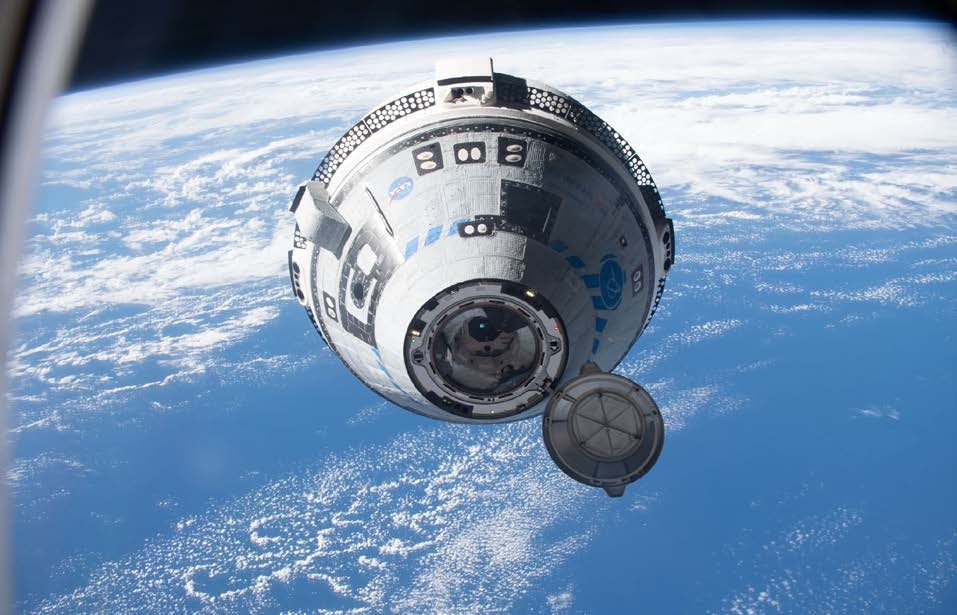
5.
Who are the two astronauts who were stuck in space?
- The two astronauts who were stranded on board the International Space Station (ISS) are 59-year-old Sunita “Suni” Williams and Barry “Butch” Wilmore, 62, both veteran NASA-trained space travellers.
- Williams, the current commander of the ISS and a retired United States Navy officer, joined NASA in 1998.
- Over her career, she has spent 322 days in space and completed nine spacewalks.
- She previously held the record for the most spacewalks by a female astronaut, until 2017 when the title went to Peggy Whitson, who completed 10.
- Wilmore first flew to space in 2009 on board the Space Shuttle Atlantis.
- Before the Boeing Starliner mission, he had logged 178 days in space.
- He has served as a flight engineer and commander on previous ISS missions, conducting research on plant growth in space, the effects of microgravity on the human body and environmental changes on Earth.
- In the Boeing mission, Wilmore served as the commander and Williams was the pilot.

6.
Who is Sunita Williams?
- Sunita Williams is a well-known NASA Astronaut and US Navy Captain (Ret).
- She was born on September 19, 1965 in Euclid, Ohio to Dr. Deepak and Bonnie Pandya.
- She considers Needham, Massachusetts, to be her hometown where she studied at Needham High School, Needham, Massachusetts, in 1983.
- She holds a Bachelor of Science in Physical Science from US Naval Academy, 1987.
- She also completed her Master of Science in Engineering Management from Florida Institute of Technology in 1995.
- Sunita Williams was the Starliner Crew Flight Test Pilot.
- She is the veteran of three space missions (Expeditions 14/15, 32/33 and 71/72).
- She was the ISS commander for Expedition 33.
- Sunita Williams has roots in India.
- She was the second American astronaut of Indian heritage to go into space, after Kalpana Chawla.
- Her father Deepak Pandya was a neuroanatomist and was born in the Jhulasan village in Gujarat, India.
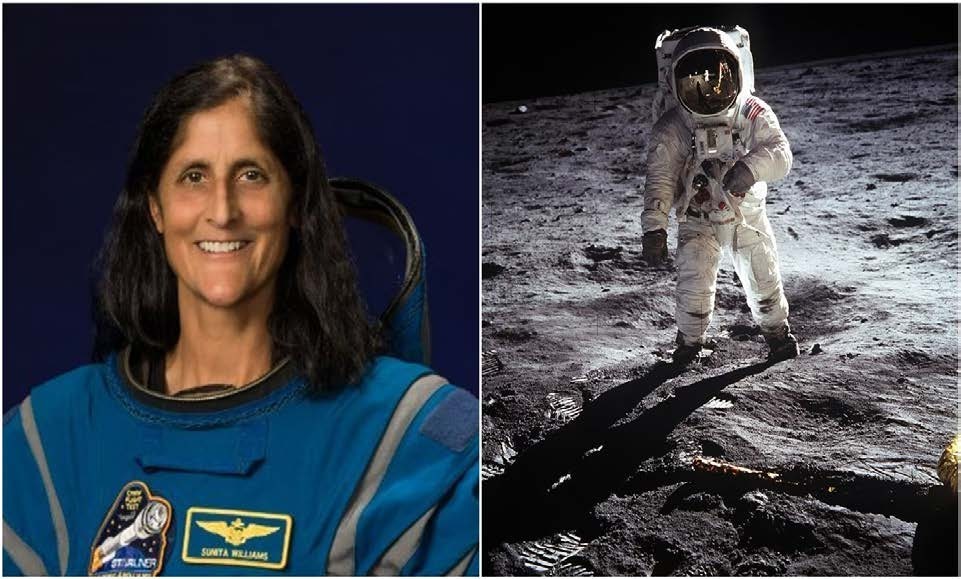
7.
What are Sunita Williams’ achievements in Space?
- Sunita Williams has completed 62 hours and 6 minutes of total spacewalk time over the course of her career, the most by any woman astronaut, and fourth on NASA’s all-time list.
- Williams has now logged the second-most time in space by a US astronaut, with 608 days over her three flights.
- During her latest mission (Starliner and SpaceX), she spent 286 days in space, more than the average of six months.
- Sunita Williams have been accorded with these awards:
- The Defense Superior Service Medal (DSSM)
- Legion of Merit
- Navy Commendation Medal
- Navy and Marine Corps Achievement Medal
- Humanitarian Service Medal and various other service awards.

8.
How long were the two astronauts stuck in space?
- Williams and Wilmore had been in space since June 5, 2024, meaning they spent more than nine months in orbit by the time they returned.
- After blasting off from Cape Canaveral, Florida, in June, they were originally scheduled to stay in space for just eight days.
- The standard ISS rotation for astronauts is roughly six months.
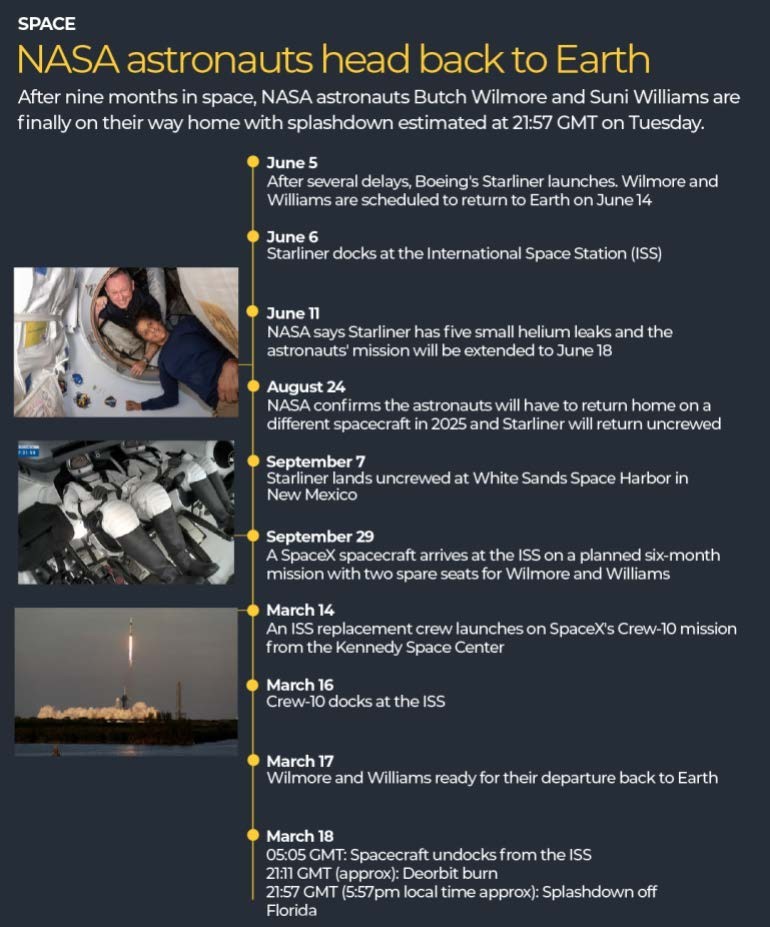
9.
Why were the astronauts stuck in space?
- Williams and Wilmore got stuck after technical issues with the spacecraft meant to bring them home.
- NASA astronauts Sunita Williams and Butch Wilmore launched aboard Boeing’s Starliner spacecraft on June 5, 2024, for its first crewed flight, arriving at the International Space Station on June 6, 2024.
- They had travelled to the ISS on board Boeing’s CST-100 Starliner as part of its first crewed test flight.
- The mission, under NASA’s Commercial Crew Program, aimed to develop private spacecraft for transporting astronauts to and from the station.
- Initially expected to last around a week, their Starliner mission was extended to more than nine months due to issues with their Boeing Starliner capsule, which delayed their return.
- During the 25-hour flight to the ISS, Starliner experienced helium leaks and a malfunctioning thruster, which helps steer and control reentry.
- When it arrived on June 6, four more of the 28 thrusters failed, delaying docking with the station.
- Although engineers restored four out of five failed thrusters, NASA deemed the spacecraft too risky for human travel and sent it back empty, leaving Williams and Wilmore stranded on the ISS.
- In August 2024, NASA decided to bring them back on a SpaceX vehicle.
- Crew Dragon-9, which launched on September 29, 2024, has been docked at the ISS since, but bringing them home earlier would have left only one US astronaut on the space station, limiting research and emergency response.
- Following NASA’s decision to return Starliner uncrewed, the duo became Expedition 71/72 crewmembers and returned home in March 2025, aboard a SpaceX Dragon spacecraft with NASA astronaut Nick Hague and Roscosmos cosmonaut Aleksandr Gorbunov on NASA’s SpaceX Crew-9 mission.
- With their replacement members arriving on Crew-10, Williams and Wilmore were finally able to head home.
10.
How did the astronauts survive in space for so long?
- Despite the unexpected extension of their stay, Williams and Wilmore remained in good health and even conducted a spacewalk together in January.
- Life on board the ISS follows a structured routine of exercise, work and leisure.
- This includes regular exercises on both the treadmill and resistance machine to maintain bone and muscle strength.
- Throughout the year, several space agencies and private companies also scheduled missions to resupply the space station with food, water and oxygen.
- Over Christmas, the two astronauts even enjoyed a festive dinner that included smoked oysters, crab, duck foie gras, cranberry sauce, Atlantic lobster and smoked salmon.
- Williams and Wilmore were able to maintain contact with their families through email and telephone.
11.
When and how did they come back to Earth?
- The process for Williams and Wilmore to return started late on Monday night.
- The SpaceX Crew Dragon capsule carrying Wilmore and Williams undocked from the ISS at 1.05am ET (05:05 GMT) on Tuesday.
- It splashed into the Atlantic Ocean just before 6pm ET (22:00 GMT).
- The SpaceX Crew Dragon capsule had been docked at the station since September 2024.
- This capsule originally brought NASA astronaut Nick Hague and Russian astronaut Aleksandr Gorbunov to the ISS, with two empty seats left for Wilmore and Williams’s return.
- The four could not return on the same capsule until an additional crew carrying four other astronauts arrived to replace them.
- Crew-10, which docked at the ISS on Sunday at 12:04 am ET (04:04 GMT), consists of NASA astronauts Anne McClain and Nichole Ayers, Japanese astronaut Takuya Onishi and Russian astronaut Kirill Peskov.
12.
What is the SpaceX Crew-9 mission?
- NASA’s SpaceX Crew-9 completed the agency’s ninth commercial crew rotation mission to the International Space Station on Tuesday, splashing down safely in a SpaceX Dragon spacecraft off the coast of Tallahassee, Florida, in the Gulf of America.
- NASA astronauts Nick Hague, Sunita Williams, and Butch Wilmore, and Roscosmos cosmonaut Aleksandr Gorbunov, returned to Earth at 5:57 p.m. EDT.
- Teams aboard SpaceX recovery vessels retrieved the spacecraft and its crew.
- After returning to shore, the crew will fly to NASA’s Johnson Space Center in Houston and reunite with their families.
- The Crew-9 mission was the fourth flight of the Dragon spacecraft named Freedom.
- It also previously supported NASA’s SpaceX Crew-4, Axiom Mission 2, and Axiom Mission 3.
- The Crew-9 flight is part of NASA’s Commercial Crew Program, and its return to Earth follows on the heels of NASA’s SpaceX Crew-10 launch, which docked to the station on March 16, beginning another long-duration science expedition.
- The goal of NASA’s Commercial Crew Program is safe, reliable, and cost-effective transportation to and from the space station and low Earth orbit.
- The program provides additional research time and has increased opportunities for discovery aboard humanity’s microgravity testbed for exploration, including helping NASA prepare for human exploration of the Moon and Mars.
13.
Mention a few contributions of Crew- 9 Mission?
- Throughout its mission, Crew-9 contributed to a host of science and maintenance activities and technology demonstrations.
- Williams conducted two spacewalks, joined by Wilmore for one and Hague for another, removing a radio frequency group antenna assembly from the station’s truss, collecting samples from the station’s external surface for analysis, installing patches to cover damaged areas of light filters on an X-ray telescope, and more.
- Williams now holds the record for total spacewalking time by a female astronaut, with 62 hours and 6 minutes outside of the station, and is fourth on the all-time spacewalk duration list.
- The American crew members conducted more than 150 unique scientific experiments and technology demonstrations between them, with over 900 hours of research.
- This research included investigations on plant growth and quality, as well as the potential of stem cell technology to address blood diseases, autoimmune disorders, and cancers.
- They also tested lighting systems to help astronauts maintain circadian rhythms, loaded the first wooden satellite for deployment, and took samples from the space station’s exterior to study whether microorganisms can survive in space.
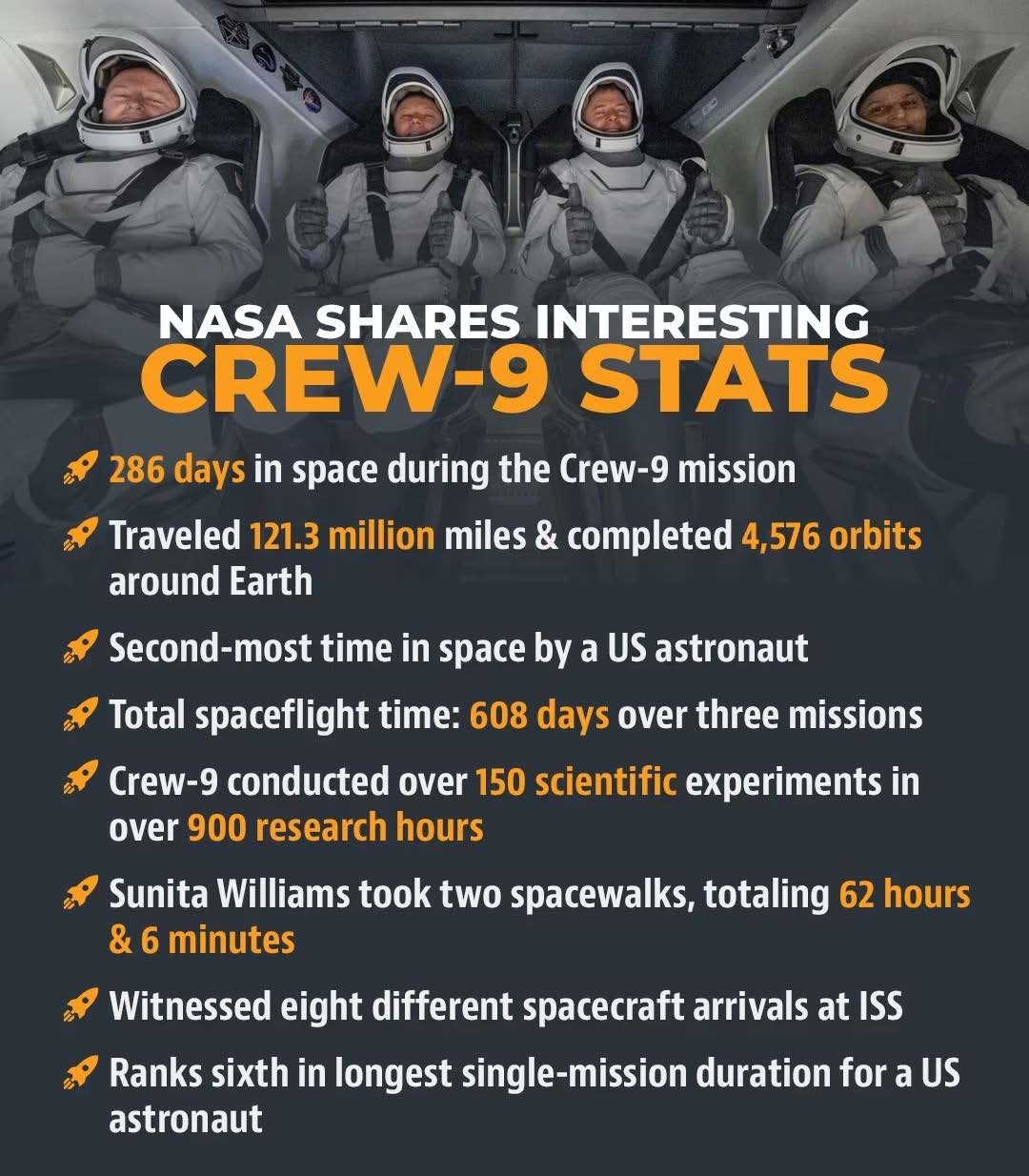
14.
Have astronauts been stuck in space before?
- Williams and Wilmore are not the first astronauts to face an extended stay in space due to unforeseen circumstances.
- There have been previous cases where astronauts had to remain in orbit longer than planned due to technical problems or geopolitical events.
- The longest single spaceflight by a US astronaut was Frank Rubio’s 371-day mission on board the ISS, from 2022 to 2023, which was extended due to issues with the Soyuz spacecraft that brought him to orbit. He ultimately returned on a different Soyuz capsule.
- In 1991, Soviet astronaut Sergei Krikalev was stranded on board the now-decommissioned Mir space station for 311 days due to the dissolution of the Soviet Union.
- Political turmoil and funding shortages delayed his return, forcing him to remain in orbit for far longer than planned. When he finally landed in March 1992, he returned not to the Soviet Union, but to a newly independent Russia.
15.
Mention Top 10 Longest Space Missions By Astronauts?
| Missions | About |
|---|---|
| Valeri Polyakov - 437 days |
|
| Sergei Avdeyev - 379 days |
|
| Frank Rubio - 371 days |
|
| Vladimir Titov & Musa Manarov - 365 days |
|
| Mark Vande Hei - 355 days |
|
| Scott Kelly & Mikhail Kornienko - 340 days |
|
| Christina Koch - 328 days |
|
| Peggy Whitson - 289 days |
|
| Sunita Williams and Butch Wilmore - 286 days |
|
| Andrew Morgan - 272 days |
|
16.
Why was Sunita Williams carried away on a stretcher after landing?
- Sunita Williams and Barry Wilmore have returned to Earth after spending 286 days in space.
- Their troubles may not be over as readjusting to Earth can be difficult due to the damage caused to the human body during space travel.
- Sunita Williams' and Barry Wilmore returned to Earth aboard a SpaceX Crew Dragon capsule, along with astronauts Nick Hague and Alexander Gorbunov.
- After experiencing microgravity for more than nine months, the rescued astronauts will face some changes to their body as well as added health risks, which could become permanent without proper care and treatment.

17.
How does space change the human body?
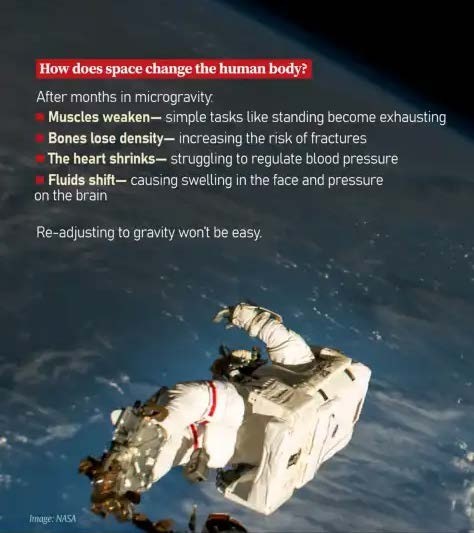
- After experiencing microgravity for more than nine months, the rescued astronauts will face some changes to their body as well as added health risks, which could become permanent without proper care and treatment.
- Here are a few bodily changes that astronauts are likely to face after an extended stay in space.
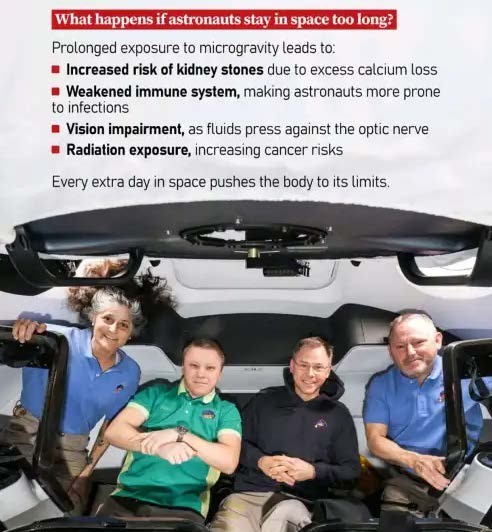
| Bodily changes | Analysis |
|---|---|
| Baby feet, loss of bone density and muscle |
|
| Puffy-head bird-legs syndrome |
 |
| Neuro-ocular Syndrome (SANS) |
  |
| Permanent risks |
|
18.
Why Sunita Williams’s unscheduled nine months long space stay may be a blessing in disguise for researchers
- Williams and Wilmore could be very useful in NASA’s ongoing study to assess the response of human bodies to long stays in space.
- They had not trained to spend so much time at the ISS and their bodies might have reacted differently compared to others who prepare sufficiently for extended stays.
- Williams and Wilmore can provide the opportunity for researchers to study the mental and psychological impacts of being stranded in space.
- Past studies have shown that bone density and muscle quality deteriorate faster in space than on Earth.
- Low gravity impacts brain fluids, and extended stays can potentially alter brain structure.
- Extended stays can also increase the risk of heart disease.
- NASA and other space agencies are preparing to set up a permanent science facility on the Moon that will require humans to remain in space for extended periods.
- As such, it has been running a program to study the health impacts of long-period stays in space.
- US astronauts flying to the ISS can now volunteer to be part of such experiments.
19.
How India responded to Sunita Williams' return?
- Prime Minister Narendra Modi on Wednesday extended a warm welcome to Indian-origin astronaut Sunita Williams as she returned to earth in a SpaceX's Dragon capsule after an extended stay of 9 months in space.
- Praising the grit, courage and boundless human spirit of the NASA astronauts, PM Modi said that Sunita Williams and the Crew9 astronauts have once again shown us what perseverance truly means.
- The Prime Minister added that space exploration is about pushing the limits of human potential, daring to dream, and having the courage to turn those dreams into reality.

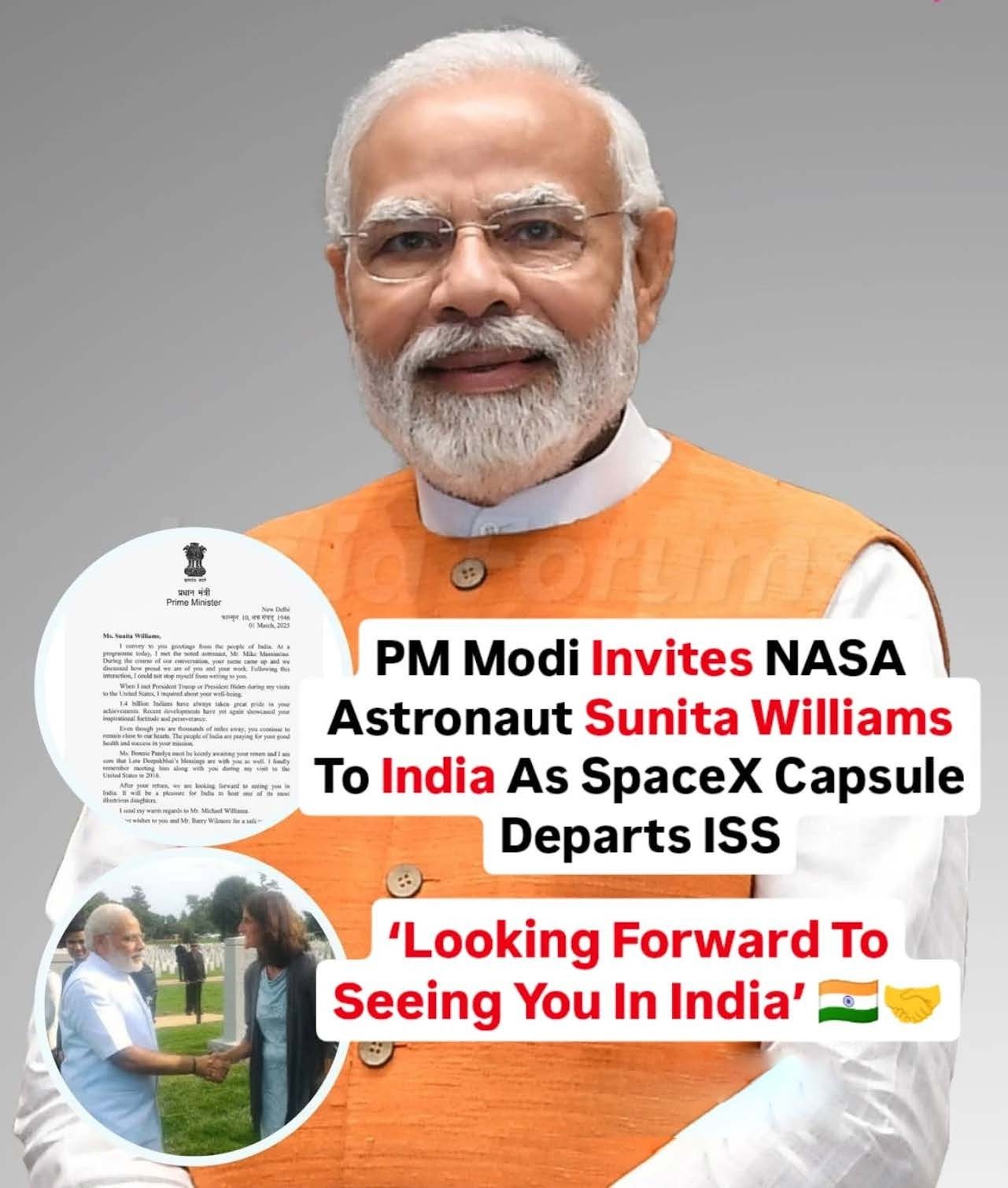
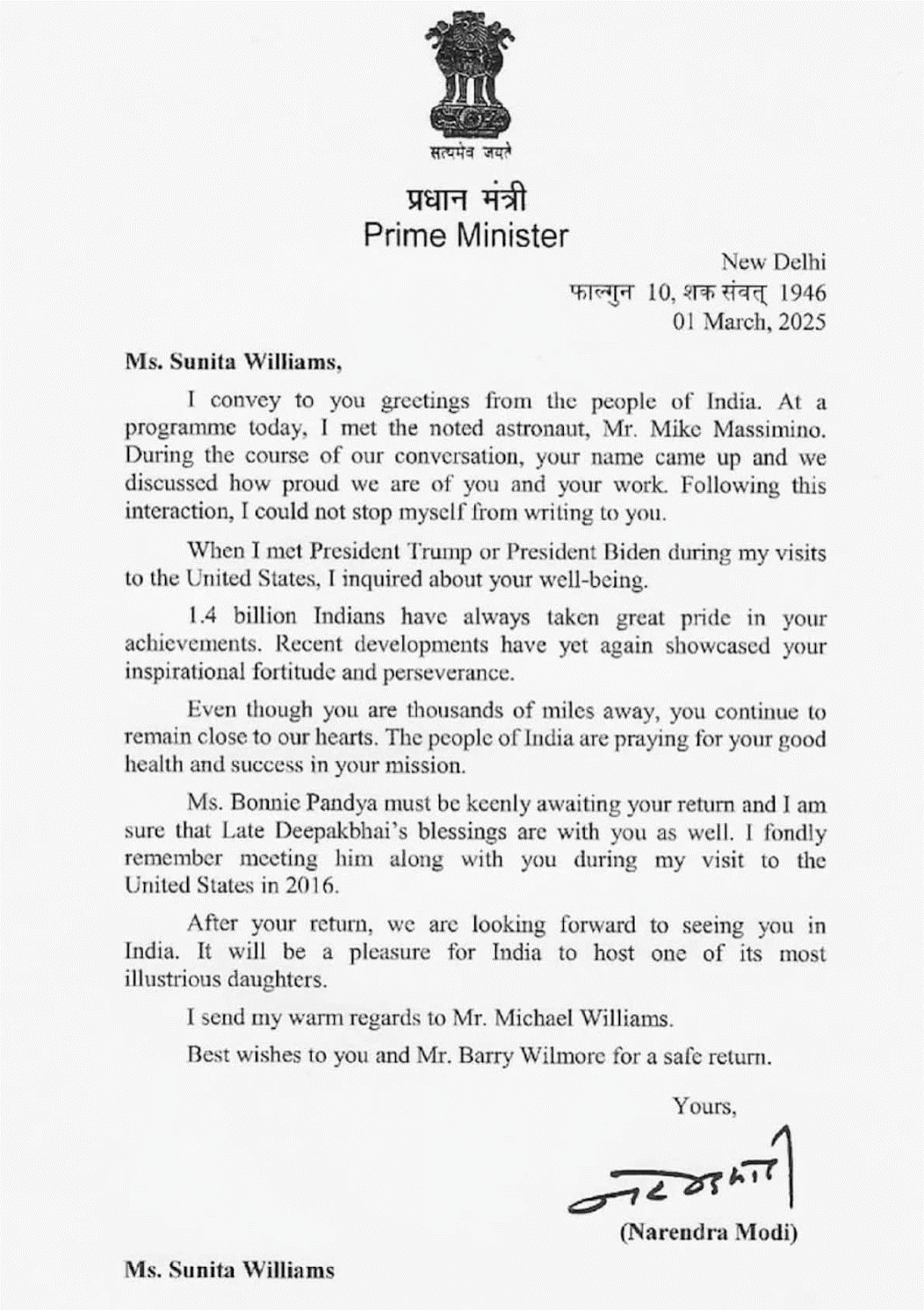
20.
What is Boeing's Starliner competitive future?
- Boeing is also eyeing Starliner as a taxi to and from privately built space stations that are in early development - the kind of nongovernment revenue that SpaceX has brought in with fully private Dragon missions.
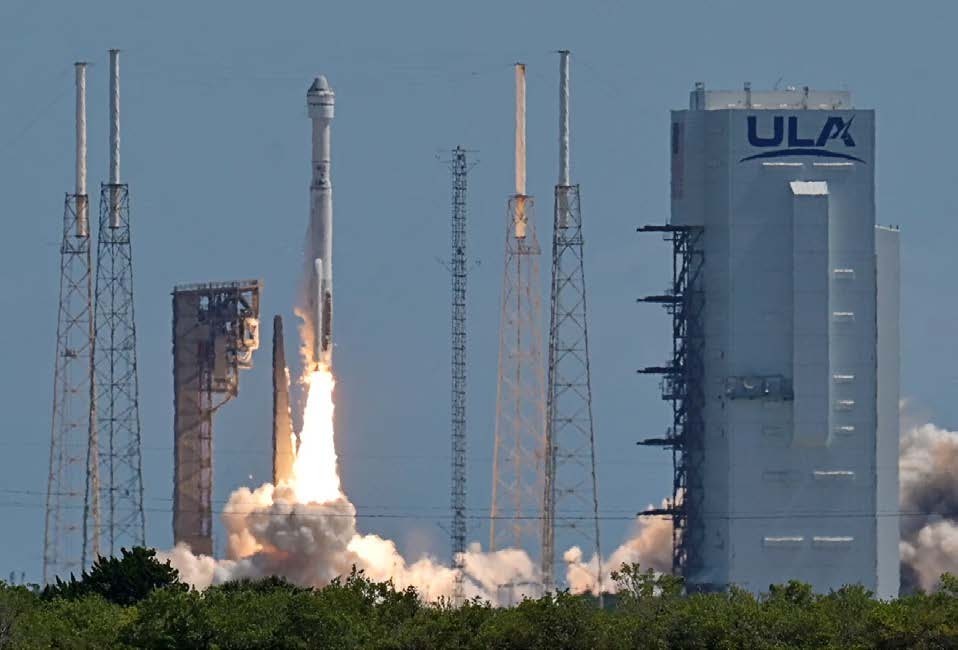
- Starliner's future was thrown into uncertainty when it suffered five thruster failures during its flight to the ISS last year, as well as leaks of helium that is used to pressurize the thrusters.
- NASA made Starliner return to Earth without its crew in September, deeming it too risky for astronauts to ride.
- A NASA safety advisory panel in January said the agency and Boeing were making "significant progress" in their post-flight technical investigations but that the propulsion system issues remain unresolved.
What is the relevance of the topic for UPSC CSE?
For Prelims: International Space Station, Outer Space Treaty of 1967, United Nations, Space Launch System, Chandrayaan-3 mission, Gaganyaan.
For Mains:Various space missions of ISRO and NASA.
Some Previous Years Prelims Questions
Q1. Which one of the following countries has its own Satellite Navigation System?(2024)
(a) Australia
(b) Canada
(c) Israel
(d) Japan
Q2. Consider the following pairs:(2023)
| Objects in space | Description |
|---|---|
| 1. Cepheids |
|
| 2. Nebulae |
|
| 3. Pulsars |
|
How many of the above pairs are correctly matched?
(a) Only one
(b) Only two
(c) All three
(d) None
Some Previous Years Mains Questions
Q1. What are asteroids? How real is the threat of them causing extinction of life? What strategies have been developed to prevent such a catastrophe? (2024-15M)
Q2. What is the main task of India’s third moon mission that could not be achieved in its earlier mission? List the countries that have achieved this task. Introduce the subsystems in the spacecraft launched and explain the role of the Virtual Launch Control Centre’ at the Vikram Sarabhai Space Centre which contributed to the successful launch from Sriharikota.(2023-15 Marks)
Q3. Launched on 25th December 2021, the James Webb Space Telescope has been much in the news since then. What are its unique features which make it superior to its predecessor Space Telescopes? What are the key goals of this mission? What potential benefits does it hold for the human race? (2022-15 Marks)
Some Questions from This Year and Previous Years Interview Transcripts
Board Sheel Vardhan sir:
- Tell me something about India’s successful space mission?
- What Changes have we made in Chandrayaan 3?
- Tell me any special mission conducted by nasa recently?
- What are your views on space privatisation?
Board Sheel Vardhan sir:
- Mention various areas in which ISRO excels NASA?
Board Suman Sharma mam:
- What do you think about commercialisation of the space sector?
- What comes to your mind when I say space?
- What is the global space sector?
- What about privatisation in space?
- Tell its pros and cons
- What is the recent isro project?
Some Questions for QUIZ
Q1. Consider the following Countries:
1. US
2. Thailand
3. UAE
4. India
5. Saudi Arabia
How many of the above countries are part of the ARTEMIS ACCORD?
(a) Only two
(b) Only three
(c) Only four
(d) All five
Some Questions for POLL
Q1. Do you think Boeing is trustworthy to carry astronauts to the ISS ?
(a) YES
(b) NO
(c) Can’t say
Q2. Do you think private players should be regulated in the space sector?
(a) YES
(b) NO
(c) Can’t say